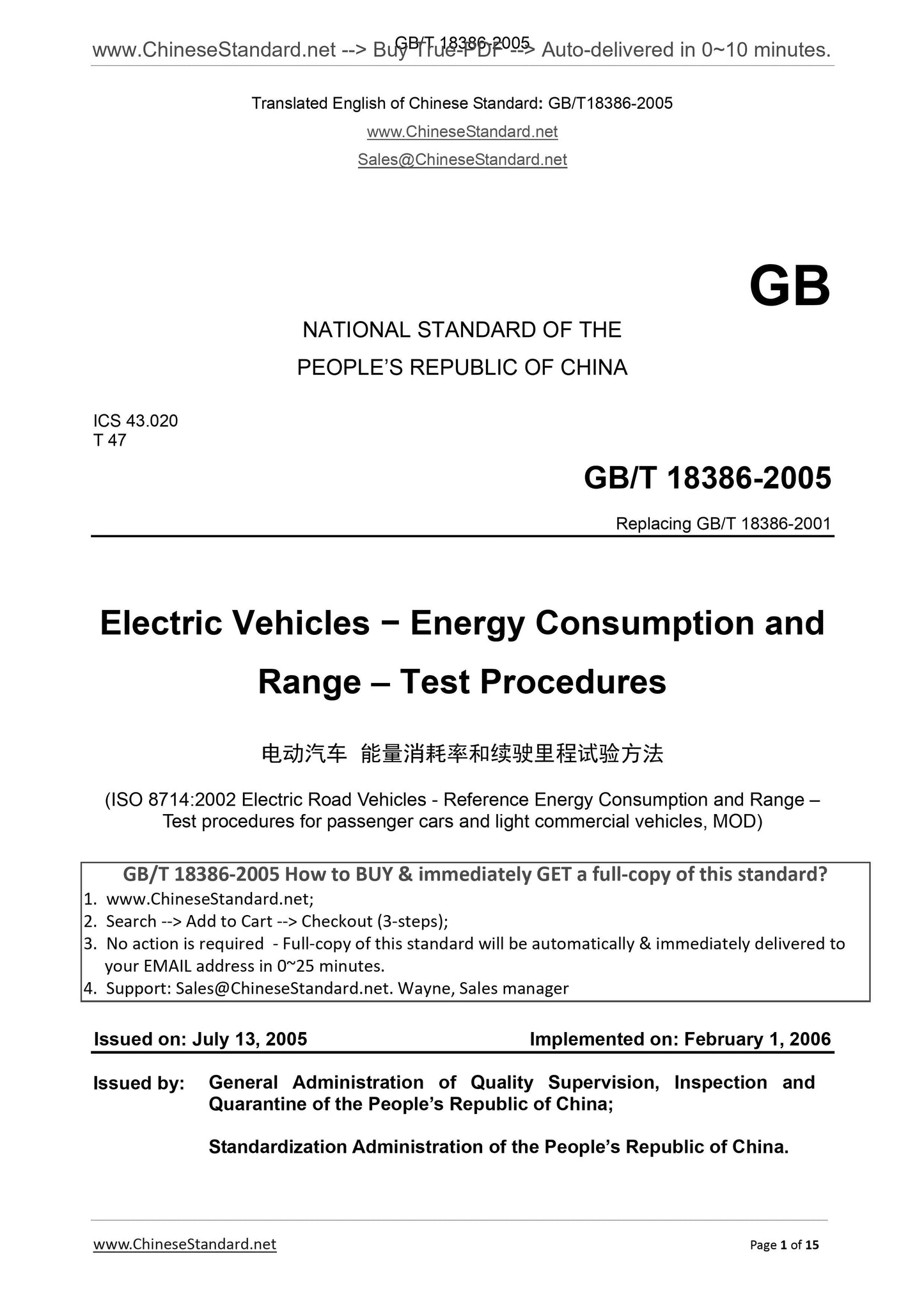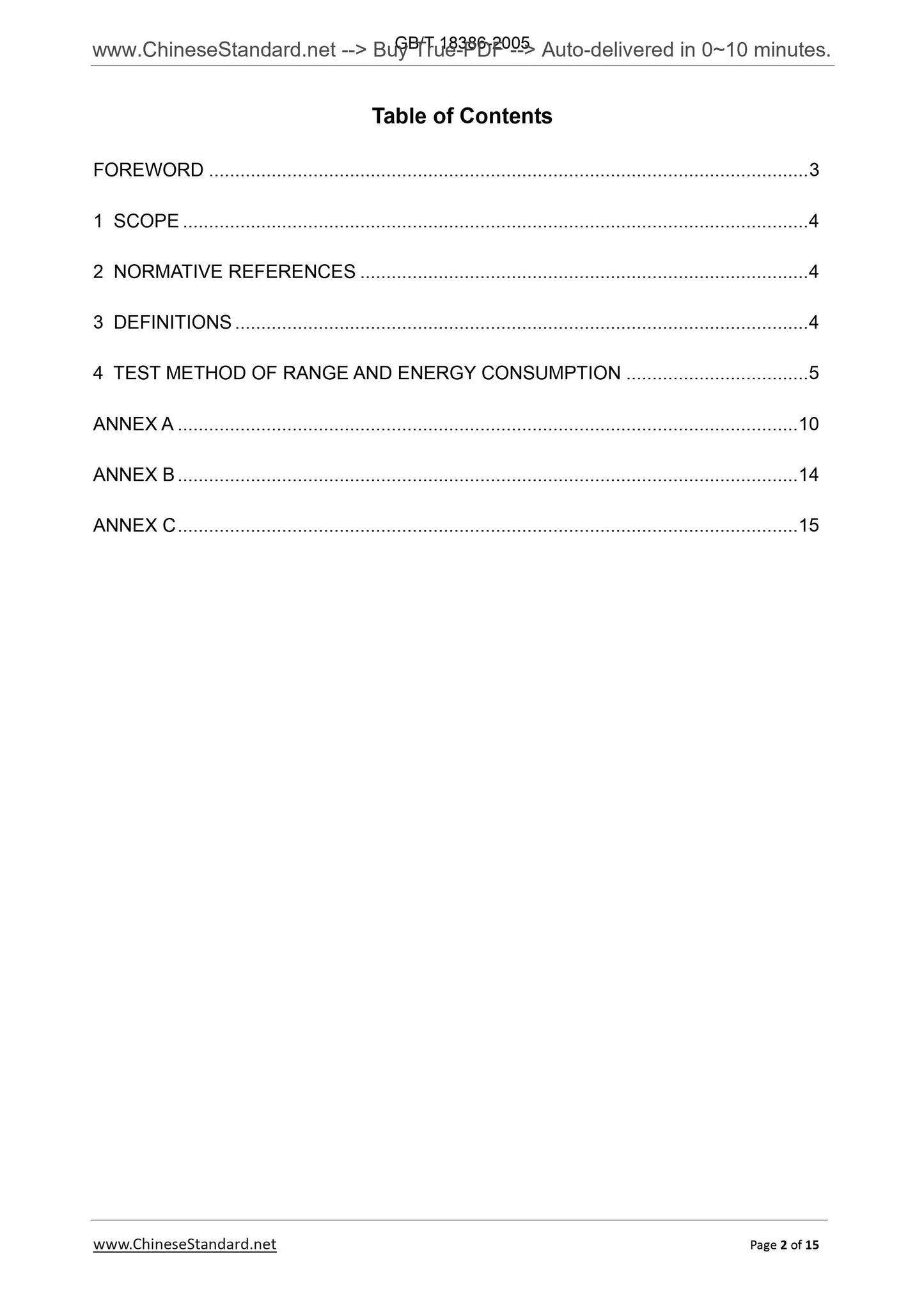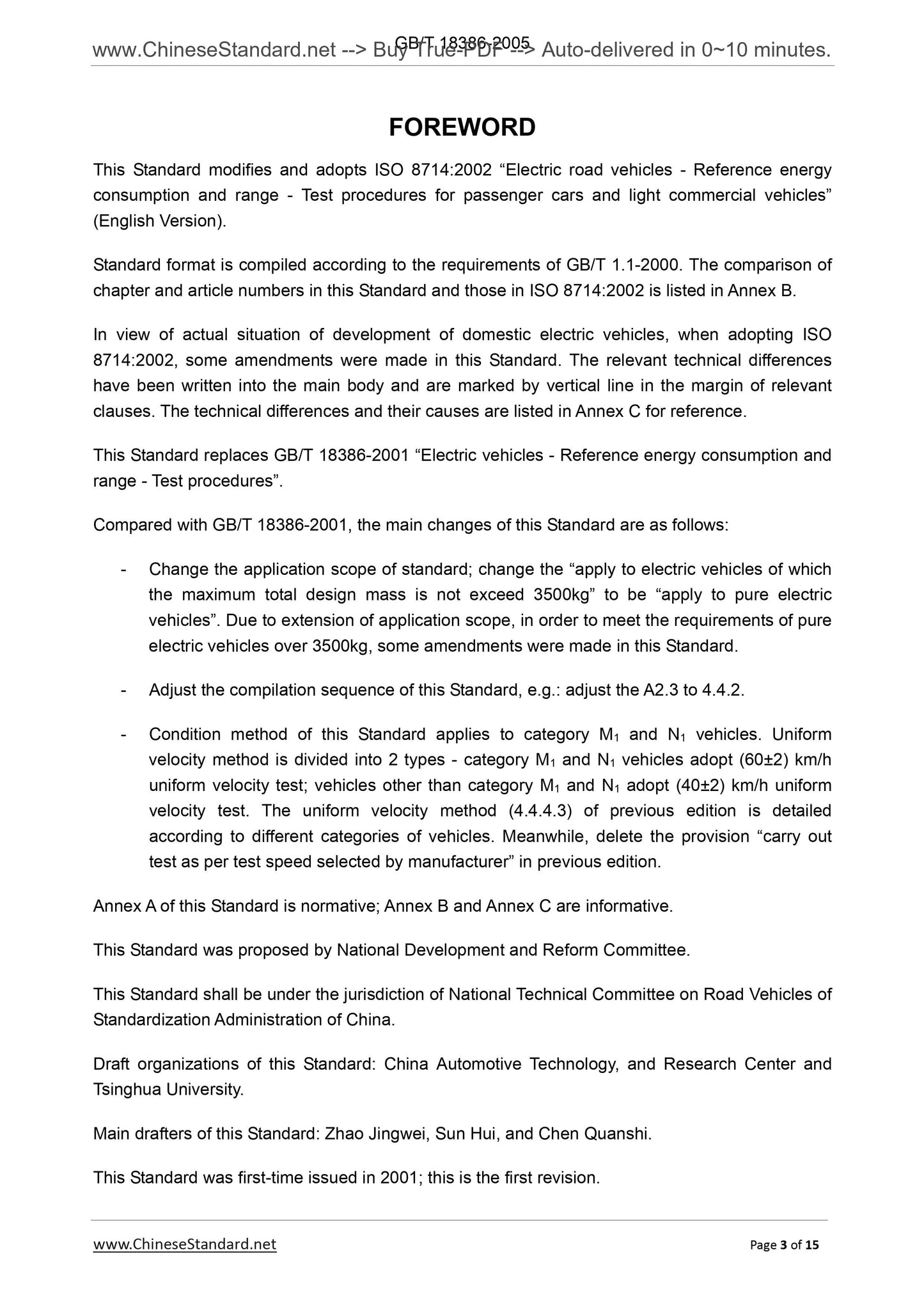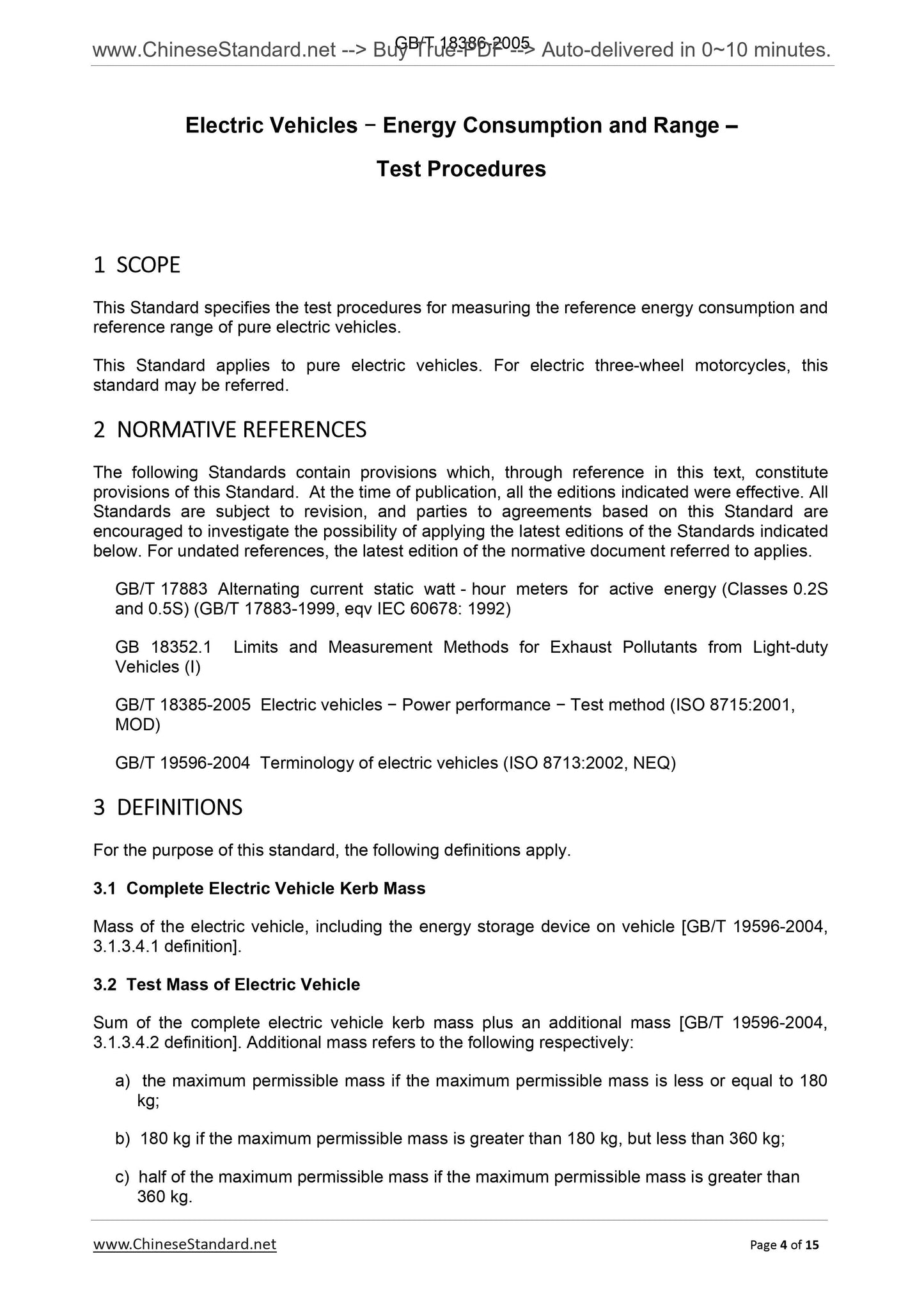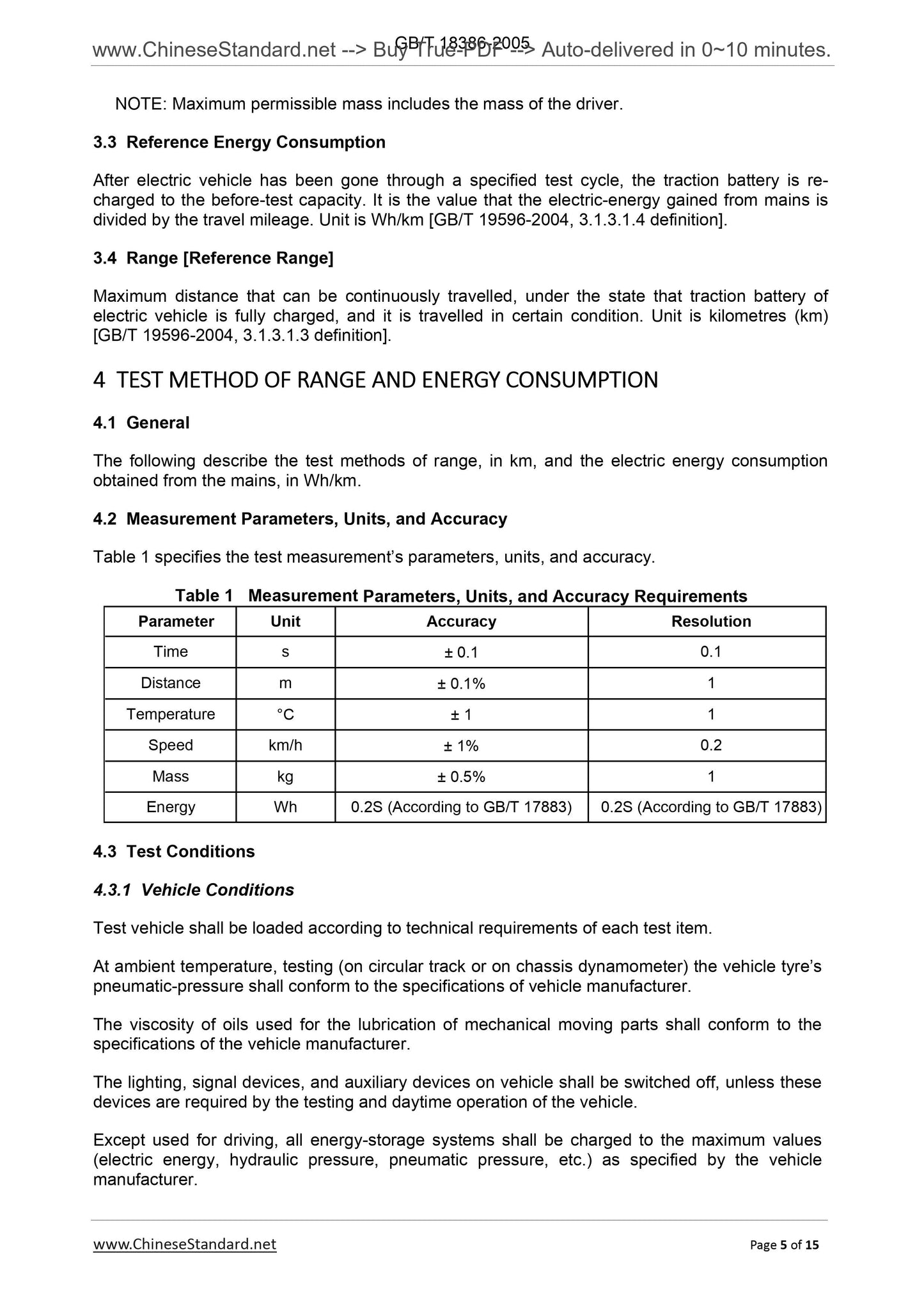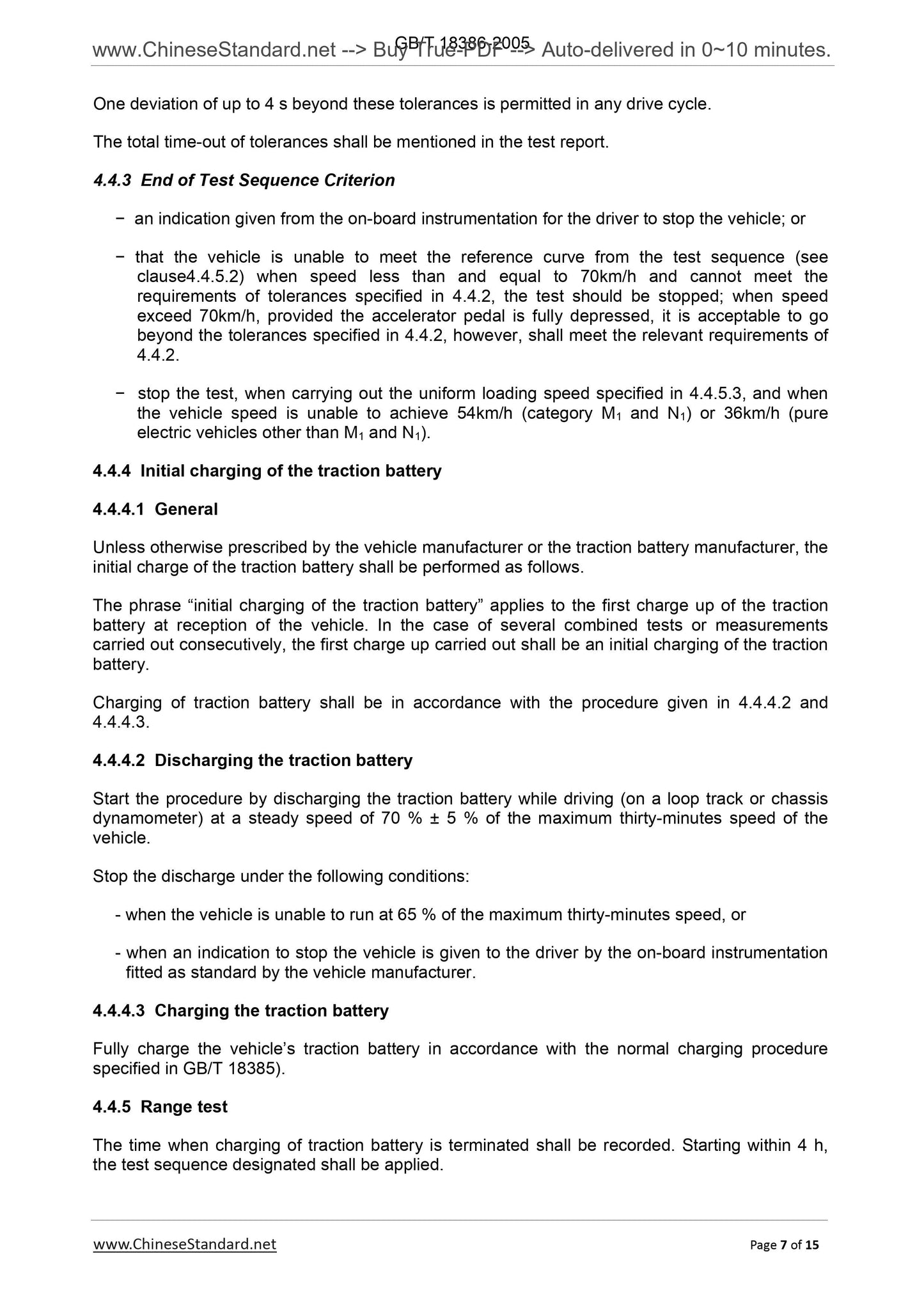1
/
of
7
PayPal, credit cards. Download editable-PDF and invoice in 1 second!
GB/T 18386-2005 English PDF (GB/T18386-2005)
GB/T 18386-2005 English PDF (GB/T18386-2005)
Regular price
$90.00
Regular price
Sale price
$90.00
Unit price
/
per
Shipping calculated at checkout.
Couldn't load pickup availability
GB/T 18386-2005: Electric vehicles -- Energy consumption and range -- Test procedures
Delivery: 9 seconds. Download (and Email) true-PDF + Invoice.Get Quotation: Click GB/T 18386-2005 (Self-service in 1-minute)
Newer / historical versions: GB/T 18386-2005
Preview True-PDF
Scope
This Standard specifies the test procedures for measuring the reference energy consumption andreference range of pure electric vehicles.
This Standard applies to pure electric vehicles. For electric three-wheel motorcycles, this
standard may be referred.
Basic Data
| Standard ID | GB/T 18386-2005 (GB/T18386-2005) |
| Description (Translated English) | Electric vehicles - Energy consumption and range - Test procedures |
| Sector / Industry | National Standard (Recommended) |
| Classification of Chinese Standard | T47 |
| Classification of International Standard | 43.020 |
| Word Count Estimation | 14,111 |
| Date of Issue | 2005-07-13 |
| Date of Implementation | 2006-02-01 |
| Older Standard (superseded by this standard) | GB/T 18386-2001 |
| Quoted Standard | GB/T 17883; GB 18352.1; GB/T 18385-2005; GB/T 19596-2004 |
| Adopted Standard | ISO 8714-2002, MOD |
| Regulation (derived from) | Announcement of Newly Approved National Standards No. 10 of 2005 (No. 84 overall) |
| Issuing agency(ies) | General Administration of Quality Supervision, Inspection and Quarantine of the People Republic of China, China National Standardization Administration Committee |
| Summary | This standard specifies the pure electric vehicle energy consumption rate and range of test methods. This standard applies to pure electric vehicles. Electric three-wheeled motorcycle may refer to. |
Share
